The Last Supper Da Vinci – A Glimpse Into The Last Supper Painting
While having the last meal with his disciples, Jesus declared, “Very truly I tell you, one of you is going to betray me,” (Gospel of John 13:21). The 12 apostles of Jesus reacted when they heard these words. Below, we look at one of the most intricate visual representations of this Biblical account: The Last Supper painting, by the Italian Renaissance artist, Leonardo da Vinci.
Artist Abstract: Who Was Leonardo da Vinci?
Leonardo da Vinci (1452 to 1519) was an Italian polymath and genius. He was an artist during the High Renaissance period. He was a famous painter during this time, but other aspects of his work endured throughout the ages, for example, his notebooks and drawings on different topics all the way from botany to astronomy. Da Vinci’s art is amongst the most popular masterpieces in the world, some of which include his famous Mona Lisa (c. 1503), the Vitruvian Man (c. 1490), and The Last Supper (c. 1495 to 1498).

The Last Supper by da Vinci in Context
The Last Supper painting by Leonardo da Vinci is one of the most artistically astute paintings created, not only of the 15th century but in the present day too – it is truly timeless. Below, we discuss some of the painting’s historical context and the detailed techniques used to create it. Due to various environmental and medium-based factors, the painting has degraded over the years and lost most of its originality. However, from various restorations, we still get to experience this Biblical masterpiece.
| Artist | Leonardo da Vinci |
| Date Painted | c. 1495 to 1498 |
| Medium | Tempera and oil paint on plaster (not fresco) |
| Genre | Religious History Painting |
| Period | Italian High Renaissance |
| Dimensions | 4.6 x 8.8 meters |
| Series / Versions | Not applicable |
| Where is it housed? | Convent of Santa Maria delle Grazie, Milan |
| What It Is Worth | Not available |
Contextual Analysis: A Brief Socio-Historical Overview
The Last Supper by Leonardo da Vinci was started around 1495 and completed around 1498. Many would ask, “Where is The Last Supper painting?” because it is not housed in any of the great art galleries or museums. It was painted on the wall of the dining room, otherwise known as a refectory, of the Dominican convent of Santa Maria delle Grazie, located in Milan. It was commissioned by the Duke of Milan, Ludovico Sforza, as part of a family mausoleum reconstructed from a church. It was not a refectory at the time that da Vinci started painting.

A “Series of Unfortunate Events”: The Restoration of The Last Supper
There is a history behind the restoration of da Vinci’s Last Supper; the painting has undergone a long, arduous journey to keep its shape, so to say. Unfortunately, the process of deterioration kicked in the moment that da Vinci started painting The Last Supper because of certain materials he used. We will discuss this in more detail in the formal analysis below.
The Santa Maria convent was also located in an area where there were higher levels of dampness as well as flooding. So, the painting absorbed moisture from different sources, including the steam from the kitchen. This in addition to being painted on a thin exterior wall led to the paint starting to flake off the wall.
The painting gradually, and naturally, deteriorated from 1517, witnessed by many. When the Italian historian, Giorgio Vasari, saw the state of the Last Supper around the mid-1500s, he reportedly described it as a “muddle of blots”. During this time, the Italian Mannerist painter Giovanni Paulo Lomazzo also reportedly said that “the painting is all ruined”.
Restoration started around 1726 and continued until well into the 20th century.
However, the various restoration efforts aggravated the painting more. Some used oil paint and varnish to fill in spaces and others did away with previous restoration work and started all over again. Some restorers also tried to move the wall to a safer location but caused damage in the process, and thus tried to glue the pieces together.
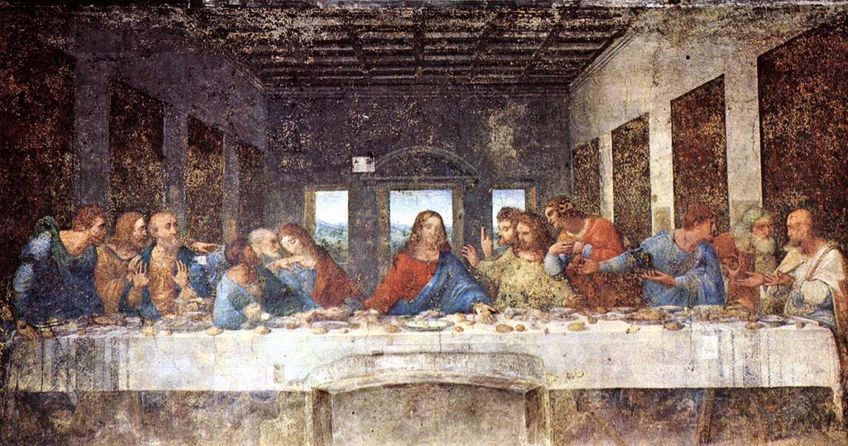
External forces other than environmental factors also contributed to the painting’s destruction. Napoleon’s troops used the refectory as stables in 1796 when they took over Milan. These troops also threw stones and rocks at the painting, and some are reported to have scratched out the Apostle’s eyes. The refectory was also used as a prison at one stage.
During the early 1900s, the painting was cleaned by various restorers and achieved a certain level of restoration, but during World War II in 1943, bombing in Milan left parts of the Santa Maria delle Grazie in ruins, including the refectory’s roof. The Last Supper painting was protected and buffered by mattresses, sandbags, and pillows.
During the refectory’s reconstruction, the painting was further exposed to the open environment, causing more degradation, but restoration continued.
The painting was covered with a protective resin to prevent moisture damage, and most of the paint from other restoration efforts throughout the years was removed. During the later 1970s, the restorer Pinin Brambilla Barcilon took over the restoration efforts on a larger scale, lasting 21 years. The restoration process included scraping away all the old paint from previous restorations and creating a controlled climate in the refectory.
The restored painting was finally opened to public display in 1999 with considerable criticism about the way it appeared – there was debate about whether it was more “deformed” or actually more of the Last Supper original. Some critics like the British artist, Michael Daley, remarked the painting should not have been restored and it (the restoration) left it (the painting) with a “20th-century character”.
The director of the Institute of Restoration in Florence, Giorgio Bonsanti, believes the restoration has been positive. He is reported to have said, “I think they’ve done a very good job. What was there has been recovered; what was added has been done with complete reversibility. I think it is far better to see 20 percent of Leonardo’s original rather than something that was a 100-percent fake”.
“The Last Supper” has certainly been an elusive painting since it was painted, mainly due to its degradation and numerous restorations. It has even been called “The Lost Supper” by some critics. Through its recent 21-year restoration, we can see new (or just the original) aspects of this Renaissance masterpiece.
The Last Supper original shows us aspects that were covered up or changed before. For example, decorative millefleurs are seen on the drapery, and some parts of the landscape in the window behind the seated figure of Christ have been detailed. Additionally, the original facial features of some of the disciples have changed, depicting them without beards, open mouths, and other features like changed head positions, eyes, and hands.
Formal Analysis: A Brief Compositional Overview
Below, we will take a closer look at the Last Supper painting and discuss da Vinci’s skill in bridging the gap between artistic aesthetics, mathematics, and geometry in this composition. There is quite a lot happening in this painting and da Vinci certainly did not place all the players haphazardly, even though they may appear as such.

Subject Matter
The Last Supper painting is a snapshot of the moment Christ tells his Apostles that one of them will betray him; “Very truly I tell you, one of you is going to betray me,” (Gospel of John 13:21). The painting depicts each apostle reacting in his own unique way. This is also taking place during the last supper with Jesus before he was given over to the authorities, who were informed by Judas.
Most of the composition is taken up by a long horizontal table seating Christ at the center with his twelve apostles to his left and right. The figures are all facing us, the viewers. We notice three vertical windows behind the figures, the central window being directly behind Christ, highlighting his figure and importance. The exterior, seen through these windows, suggests a green and lush mountainous landscape.
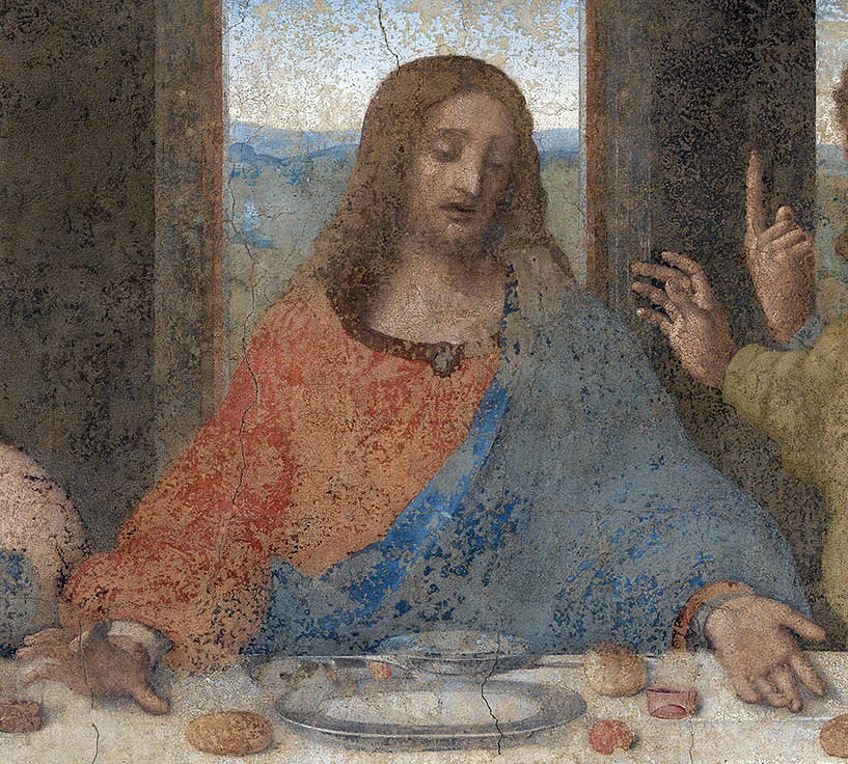
The interior depicts a geometric architectural space with four vertical tapestries hanging on either side of the walls flanking the figures. Near the bottom of the painting, directly underneath the figure of Christ, where his feet would be, is a blank section – this is where a door was cut into the refectory’s wall years prior. Some sources also suggest that da Vinci depicted Christ’s feet in the same manner we see when he was on the Cross.
On the dining table, we notice the white tablecloth with its lacework patterning, wine glasses, water pitchers, pewter bowls, and foodstuffs like rolls, fish, fruits, and also wine.
Seated by the table, the figures are divided into four groups of three. Originally, only the figures of Jesus, Judas, John, and Peter were identifiable, however, due to other sources (reportedly da Vinci’s notebooks and other copies of this painting), all the figures were able to be identified. Each group also expresses a certain emotional reaction upon hearing the news from Jesus.
From the far left to the right, the first group consists of Bartholomew, James the Less (or Son of Alphaeus), and Andrew, whose hands are raised as if indicating to stop or slow down – all three characters depict emotions of surprise.
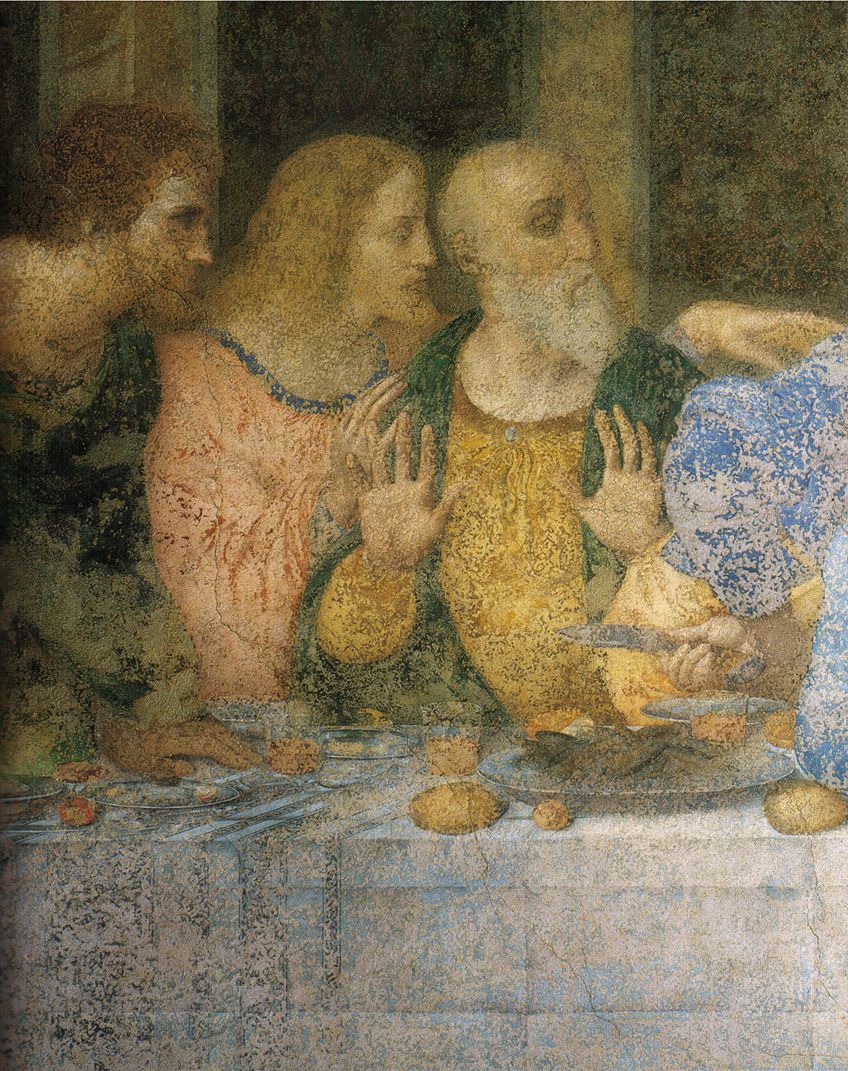
The next group starts with Peter leaning over at John, whose head tilts to the left side towards Peter. Peter’s left hand is on John’s right shoulder. John’s hands are both clasped, resting on the table. He is also the youngest of the twelve apostles and is described as having a “swooning” disposition.
If we look closely, we will also notice Peter’s right hand is holding a knife, but his arm and hand appear out of proportion. This has been called the “disembodied hand” because his right shoulder and elbow are not in anatomical alignment with his hand. However, this can also be because Peter seems to be resting his hand on his hip while holding the knife, which makes it appear seemingly disjointed.
Furthermore, this knife is a telling symbol about the forthcoming incident where Peter will try to defend Jesus while being arrested in the garden of Gethsemane. This is from the verse in the Gospel of John (18: 10), “Then Simon Peter, who had a sword, drew it and struck the high priest’s servant, cutting off his right ear. (The servant’s name was Malchus)”.
Judas Iscariot sits next to Peter, but in the painting, he appears more in front of both Peter and John. An important point to note is that Judas is usually depicted separated from the other apostles in other paintings of this scene. We see this in The Last Supper (1447) by the Early Renaissance painter, Andrea del Castagno.

Da Vinci depicted him with all the other apostles, but with differences. For example, his head is depicted on a lower compositional level than the other apostle’s heads. He is identified as wearing blue, green, and red robes. His right shoulder is leaning on the table, and he appears to be aghast or taken aback at the news. He is clearly on another “level” than the other apostles, which still sets him apart.
He is also clutching a money bag in his right hand, which could be the money (silver) he received for betraying Jesus. He also knocks over a salt pot, which is a symbol of a bad omen. His left hand is reaching towards a bowl on the table and similarly, Christ’s right hand is reaching towards the same bowl.
This could hint at the Bible verse in Matthew 26, when the disciples asked, “Surely you don’t mean me, Lord?” and Jesus responded, “The one who has dipped his hand into the bowl with me will betray me”.
In the center is the figure of Jesus Christ. His countenance is one of openness, suggesting his blessing of food and wine, also referred to as the Holy Sacrament and Eucharist. This is from Matthew 26 in the Bible, when Jesus says, “Take and eat; this is my body” and after drinking from the cup, “Drink from it, all of you. This is my blood of the covenant, which is poured out for many for the forgiveness of sins”.

When we look at the next group of three figures to the right (on Jesus’ left), we notice James, whose arms are wide open, illustrating a stunned reaction. Next to him, but appearing almost behind him, is Thomas, whose only point of identification is his raised index finger.
The raised index finger is possibly a connection to Christ’s Resurrection and when Thomas needed to verify Jesus’ wounds by touching them with his own hands. Lastly, we see Philip with a questioning expression, as if he is urging Jesus to give him an explanation.
This again points to the verse, “Surely you don’t mean me, Lord?”
The last group of three depicts Matthew and Jude Thaddeus turned towards Simon the Zealot, who sits at the far right from our view, and the far left from Jesus’ side, at the end of the table. Matthew and Thaddeus are both seemingly questioning Simon and seeking some sort of answer to what is going on after Jesus gave the news.
Geometric Symbolism In The Last Supper by da Vinci
We mentioned various symbolic references, especially pertaining to the 12 apostles of Jesus. However, there are other symbolic references that pertain to the use of geometry and the number three, which could refer to the Holy Trinity.
We see the latter in the four groups of three apostles, the three windows in the background, and most importantly, the figure of Christ is in a triangular shape. His shape is equilateral (where all sides are equal) with the top point as his head, the two sides are his outstretched arms, and the base of the triangle appears where the table meets his torso.
The geometry used here also indicates the idea of divinity, which additionally includes the semi-circular shape (which also suggests a circle) above the window directly behind Christ’s figure.

The use of geometry goes back to Greek philosophy, and we see here this influence on da Vinci’s work. It also hints at the Neo-Platonic thought from the Renaissance period, which was a revival of Classical philosophical thought. It was based on Plato’s philosophies of the world beyond the material world and the idea of perfection and beauty, which was also adopted by various figures following the Christian ideals.
Another symbolic aspect that has been suggested is how da Vinci distinguished the spiritual and material worlds by placing the horizontal table between each. The figures are also densely congregated in the foreground by the table, which suggests the material, earthly plane. Behind the figures is the suggestion of heaven or paradise.

Furthermore, the simple setting of the interior also eliminates all unnecessary distractions in the painting, and we are faced with only the necessary elements that suggest the existence of more beyond the material world.
Da Vinci also did not paint a halo over Jesus’ head, which we will notice in other paintings depicting this Last Supper scene. Some sources suggest that he was not a devoutly religious man and believed in nature, which is also supposedly why he chose to depict everyday people as the apostles.
Painting Technique: Color, Light, and Texture
A large part of The Last Supper by Leonardo da Vinci is the choice of painting medium used. However, in the artist’s attempt to portray richer colors, this choice unfortunately contributed to the painting’s deterioration and seemingly endless restoration efforts.
Da Vinci did not paint The Last Supper as a fresco. Fresco paintings are done with water-soluble color pigments applied to a fresh coat of wet plaster, and is referred to as buon fresco, meaning “true fresh” in Italian. This technique had to be done with efficiency and speed as the plaster would dry within hours.
Da Vinci wanted to use colors that would stand out compared to fresco colors, so he combined various media like oil paints and tempera to a double layer of dry plaster.
He primed the wall with a gesso, pitch, and mastic base. He applied a white lead undercoat that gave the paints more luminosity, which is a technique usually used in panel painting. This technique on a stone wall was not as successful, however, because the paint started to flake after only a few years of application.

Da Vinci also utilizes the chiaroscuro and sfumato techniques to create a visual depth from the color contrasts of light and dark. We see these contrasts of light and dark especially in the forefront of the picture plane moving inwards towards the figure of Christ. The areas near the walls appear darker and more in shadow.
This technique also allowed the artist to do away with excessive bold or sharper outlines. Sfumato, meaning “smokey,” is also a technique to blend colors with one another. This also creates a more natural gradation of tones and outlines, giving the painting an overall hazy and realistic appearance.
The texture of the painting has been described as “grainy and fragmented”, which is reportedly intentionally done by da Vinci, but also a result of the continual deterioration over time done to a stone wall.

Perspective and Scale
There is a skilled utilization of lines to indicate perspective in The Last Supper painting. Da Vinci was a master at incorporating mathematical elements to create visual symmetry. Jesus’ head is the primary vanishing point for the perspectival lines, also called orthogonal lines, which are part of what creates the single point linear perspective in this painting.
These also highlight the central and most important figure of the composition, which is Christ. An interesting fact about da Vinci’s method to achieve one-point perspective is that he hammered a nail into the wall to indicate where it started.
Da Vinci also uses aerial perspective in the outer landscape. It appears hazy and atmospheric, which creates a sense of depth. Furthermore, the use of hazier colors adds to this sense of distance in the background.

Because the painting has been done on the Santa Maria delle Grazie refectory wall, it is large in scale, measuring 4.6 x 8.8 meters (29 feet in length and 15 feet in height). Along with the skilled use of perspective, The Last Supper appears as if it is part of the room it is painted in, and viewers seemingly become part of the supper scene.
Imagine gazing at the supper scene while having supper in the refectory, which was one of the intentions behind the symbolism of this painting, meant to accompany the friars’ meals.
Facts About The Last Supper Painting
Below, we discuss a few interesting facts about da Vinci’s Last Supper painting, ranging from how he used preparatory sketches to study people’s facial expressions to important copies made of the painting that help us see what it may have looked like in the very beginning. We will also talk about some conspiracy theories about the painting’s symbolism and subject matter.
Da Vinci’s Preparatory Sketches
Da Vinci made a significant number of preparatory sketches for the Last Supper painting. He is reported to have studied various people and their different facial expressions and how their movements appeared. These were for his depictions of the twelve apostles.
The facial features of the twelve apostles were apparently features taken from ordinary people around Milan. Some sources also suggest that da Vinci found a real-life criminal to model the features for Judas’ figure in the painting; da Vinci is believed to have visited jails in Milan to find the perfect model.

Copies of The Last Supper Original
Another important part of The Last Supper painting, ironically, is all the copies of the painting. There have been numerous copies made over the years. Two important copies come from the Italian painters, Giampietrino (c. 1520), which is housed in the Royal Academy of Arts in London, and Cesare da Sesto (c. 1520), housed at the Church of St. Ambrogio in the district of Ponte Capriasca in Switzerland. Both artists were believed to have been in da Vinci’s life and circle, possibly as his assistants.
The paintings are important copies giving details about “The Last Supper” original. In fact, Giampietrino’s copy was utilized as a reference for the major restoration during the 1970s.
Other, more contemporary copies of the Last Supper painting and style have been appropriated and deconstructed by artists like the Surrealist Salvador Dalí’s The Sacrament of the Last Supper (1955), Pop Artist Andy Warhol’s The Last Supper (1986), Susan Dorothea White’s The First Supper (1988), Feminist artist Mary Beth Edelson’s Some Living American Women Artists / Last Supper (1972), and many others.

Conspiracy Theories About The Last Supper Painting
The Last Supper by da Vinci has been the topic of numerous religious conspiracy theories, becoming a symbol of mystery with “hidden” messages. One common conspiracy theory worth noting is the figure of John sitting next to Jesus’s right (our left) who has been reported to, in fact, be Mother Mary.
Almost all Last Supper paintings before da Vinci’s version depict John in a feminine manner, and da Vinci also copied the primary characteristics of these previous depictions. We will notice John’s figure always has a languid body posture, commonly depicted reclining or sleeping next to Jesus. He has also been described as “the disciple whom Jesus loved” in the Gospel of John.
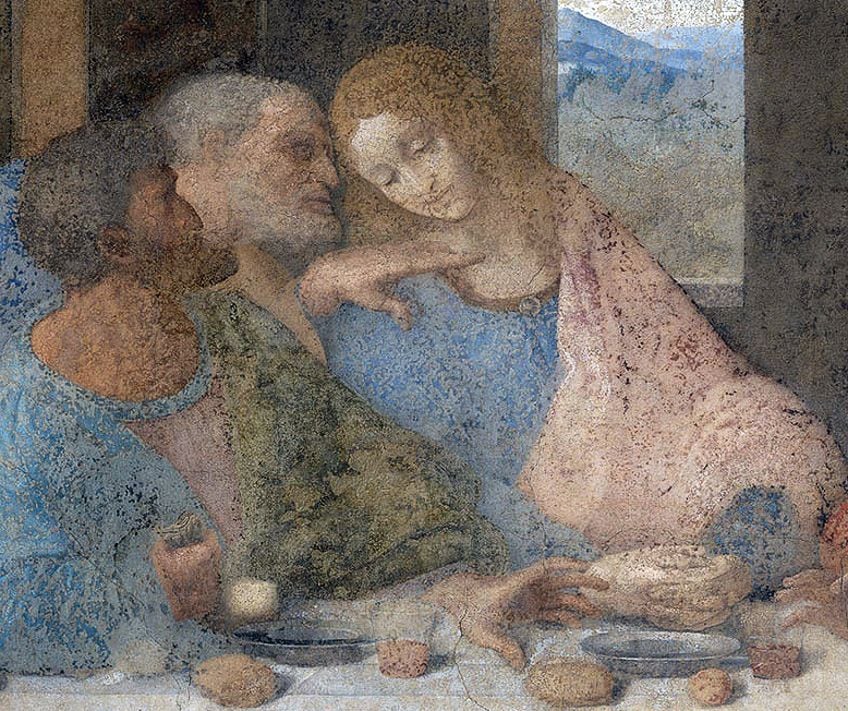
Examples of John in other paintings include Duccio di Bouninsegna’s The Last Supper (1325), Andrea del Castagno’s The Last Supper (1445 to 1450), and Domenico Ghirlandaio’s The Last Supper (1486), which could have been an influence on how da Vinci set out his painting.
Leonardo da Vinci was also known to depict his subject matter with feminine qualities.
An example is evident in his painting titled Saint John the Baptist (c. 1513 to 1516). Furthermore, Mother Mary is believed to be portrayed with the apostles in other paintings of the Last Supper, for example, in Fra Angelico’s The Last Supper (1442), we see a woman kneeling in the left corner. This would make the idea of her presence in da Vinci’s painting less mysterious.
Other symbols like an “M” have been reported to be embedded in the center of the composition, which undoubtedly stands for Mary Magdalene. The books The Templar Revelation (1997) by Lynn Picknett and The Holy Blood and the Holy Grail (1982) by Michael Baigent, Henry Lincoln, and Richard Leigh were also influential in furthering this “speculation”. The Da Vinci Code (2003) by Dan Brown has also been a pop-cultural influence introducing and expanding on many of the above-mentioned theories.
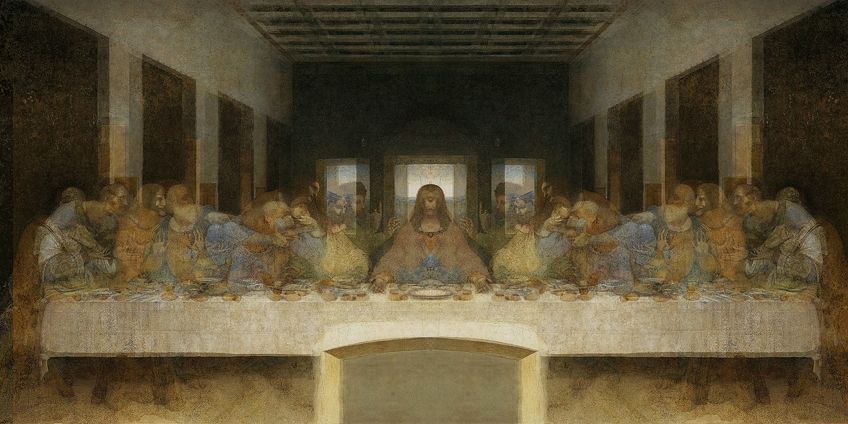
Standing the Tests of Time
The Last Supper painting is a testament to the skill and precision of one of the best Renaissance artists, Leonardo da Vinci, who painted and depicted a famous scene in Christian art – that of the Biblical Last Supper. The Last Supper painting has, furthermore, been through almost everything a painting can go through, and probably should not go through.
From deterioration, destruction, numerous restorations, and endless speculations, it remains intact on the refectory wall of Santa Maria delle Grazie. It is now protected in the climate-controlled room, allowing only several visitors at a time to view it for a few minutes.
Take a look at our The Last Supper painting webstory here!
Frequently Asked Questions
Who Painted The Last Supper?
The Biblical scene where Christ has his last supper with his disciples has been the subject of numerous paintings done throughout European history and Christian art. There have been many artists who painted the Last Supper scene, however, High Renaissance artist Leonardo da Vinci’s The Last Supper, started around 1495 and completed around 1498, is one of the more popular versions.
Where Is The Last Supper Painting by Leonardo da Vinci?
The Last Supper painting by Leonardo da Vinci was painted on the wall of the dining room (or refectory) in the Dominican convent of Santa Maria delle Grazie, located in Milan. It was commissioned by the Duke of Milan, Ludovico Sforza, as part of a family mausoleum reconstructed from a church. It was not a refectory at the time da Vinci started painting.
Why Is The Last Supper by da Vinci Falling Apart?
Since da Vinci started painting The Last Supper, it started deteriorating because of the materials he used. The refectory of the Santa Maria Convent, where the painting is housed, is also located in an area with higher levels of dampness and prone to flooding. The painting absorbed moisture from different sources, including the steam from the kitchen. It was also painted on a thin exterior wall and the paint started flaking off the wall.
Does Jesus Have Feet in The Last Supper by da Vinci?
Yes, but during the 1650s, a door was cut into the refectory’s wall right underneath the figure of Jesus, which also cut out his feet. In other copies of The Last Supper painting, we can see Jesus’ feet, such as in Giampietrino’s The Last Supper (c. 1520), which is housed in the Royal Academy of Arts in London.
Isabella studied at the University of Cape Town in South Africa and graduated with a Bachelor of Arts majoring in English Literature & Language and Psychology. Throughout her undergraduate years, she took Art History as an additional subject and absolutely loved it. Building on from her art history knowledge that began in high school, art has always been a particular area of fascination for her. From learning about artworks previously unknown to her, or sharpening her existing understanding of specific works, the ability to continue learning within this interesting sphere excites her greatly.
Her focal points of interest in art history encompass profiling specific artists and art movements, as it is these areas where she is able to really dig deep into the rich narrative of the art world. Additionally, she particularly enjoys exploring the different artistic styles of the 20th century, as well as the important impact that female artists have had on the development of art history.
Learn more about Isabella Meyer and the Art in Context Team.
Cite this Article
Isabella, Meyer, “The Last Supper Da Vinci – A Glimpse Into The Last Supper Painting.” Art in Context. September 10, 2021. URL: https://artincontext.org/the-last-supper-da-vinci/
Meyer, I. (2021, 10 September). The Last Supper Da Vinci – A Glimpse Into The Last Supper Painting. Art in Context. https://artincontext.org/the-last-supper-da-vinci/
Meyer, Isabella. “The Last Supper Da Vinci – A Glimpse Into The Last Supper Painting.” Art in Context, September 10, 2021. https://artincontext.org/the-last-supper-da-vinci/.




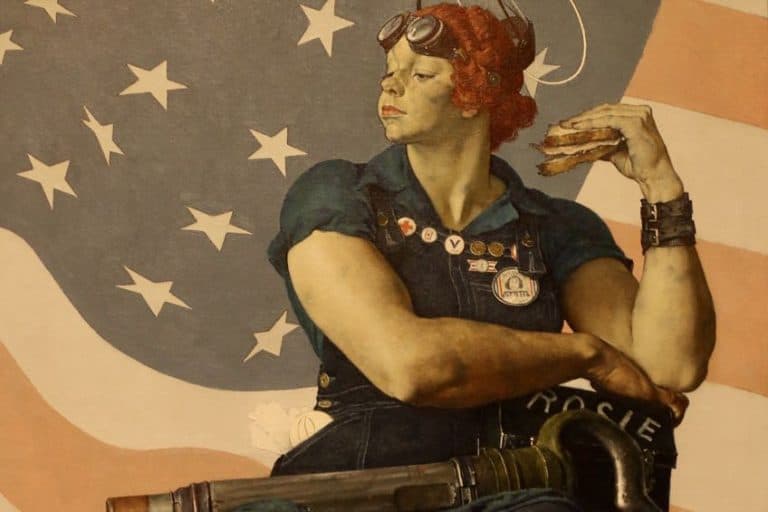
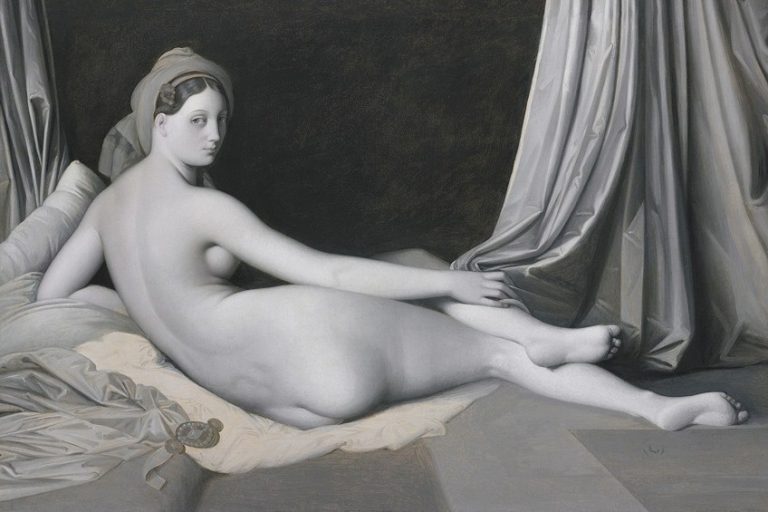

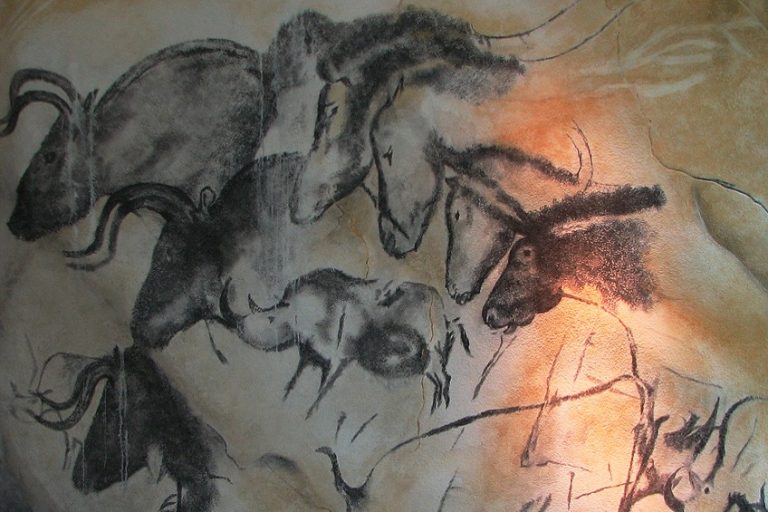

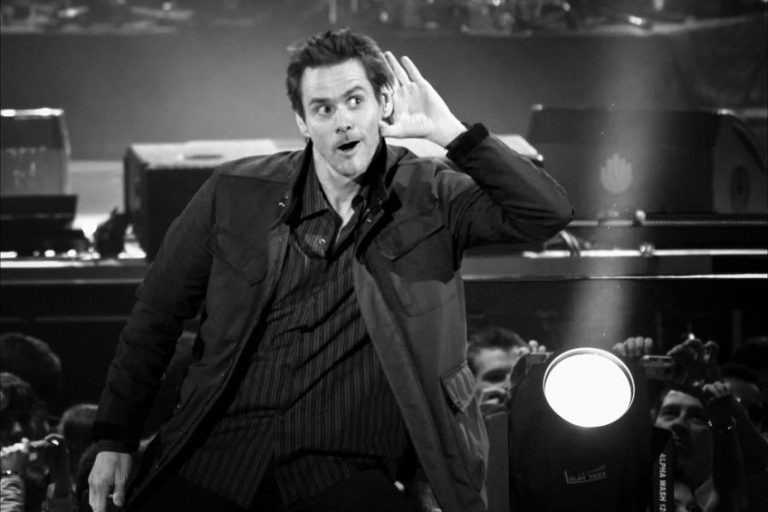


This is one of the most comprehensive article I’ve seen online and the paragraph about symbolism is very good.
You might be interested by The Geometry of the Last Supper which uncovers the geometry behind the composition and sheds a new light on the inner symbolic meaning of the painting.